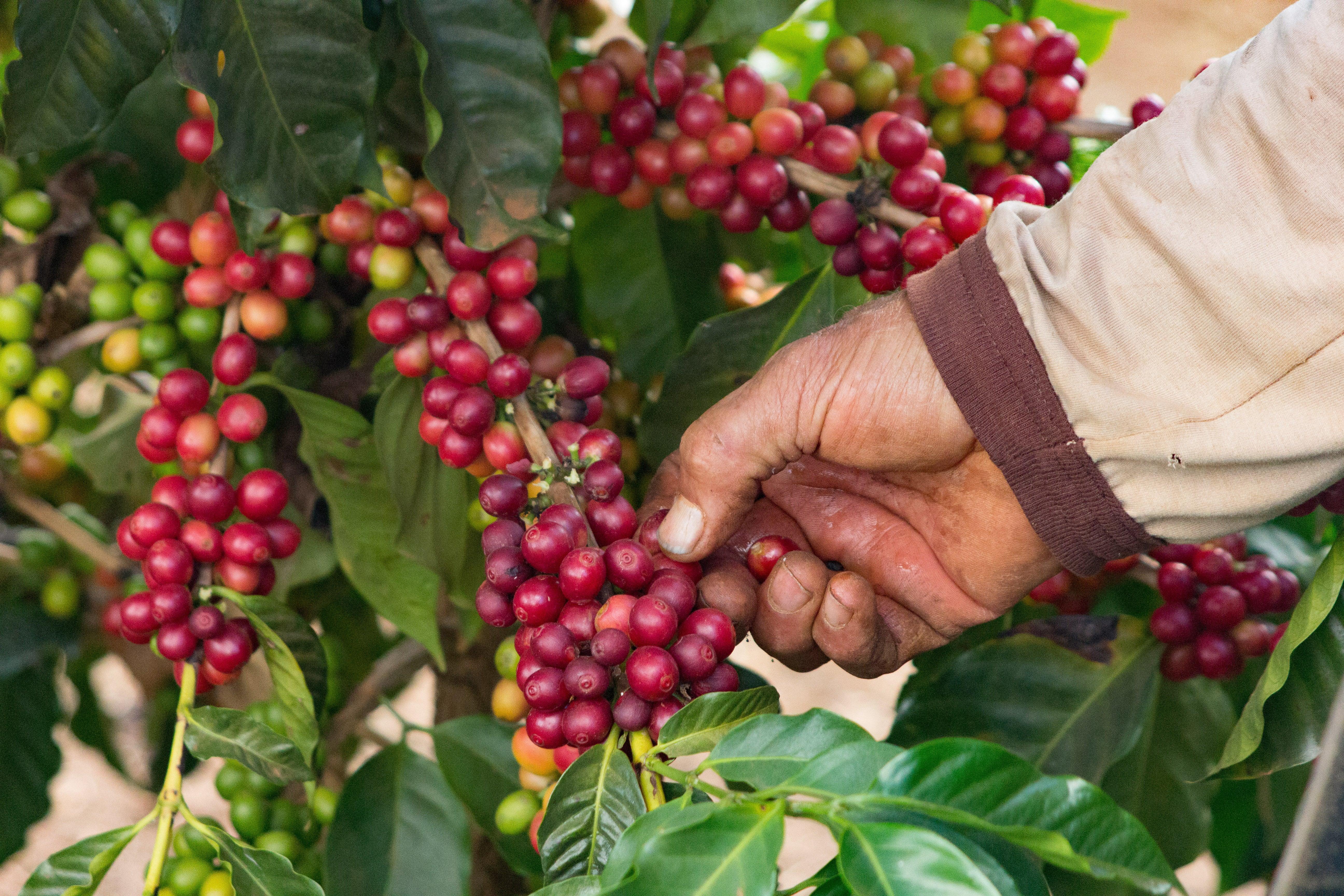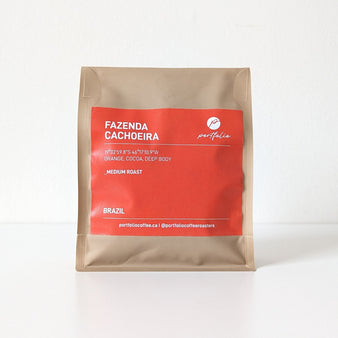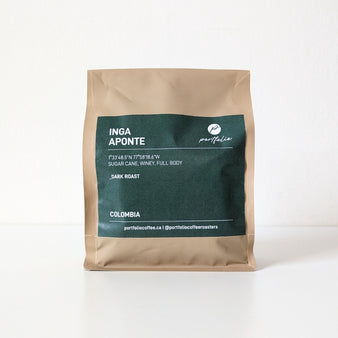Coffee Cherry: Everything About The Coffee Fruit
Published Date:
Did you ever wonder where coffee beans come from? Not every coffee drinker knows that coffee is really the seed from the coffee cherry. The coffee plant is a fruit tree and the coffee cherry looks similar to berries. They start green, and as they ripen, they turn into shades of red.
Want to know more about the fruit that carries the delicious beans you find at coffee stores? We’ve put together this quick article with everything you need to know about the coffee cherry.
Is Coffee a Cherry?
That’s right, from a purely biological point of view coffee is a fruit.
The coffee tree grows and produces beautiful and fragrant white blossoms followed by green berry-like cherries. Once they’re ripe, they show shades of red and pink and are ready to be picked. After being picked, the skin and pulp are removed and what’s left is the seeds - commonly known as green coffee beans, which are dried and roasted before reaching your cup of espresso.
Coffee cherries have hard and bitter skin, but the fleshy pulp that covers and protects the beans is juicy and sweet. While they have an important role while the coffee fruit is growing and ripping, they also make a difference in your cup of coffee.

How Does The Coffee Cherry Impact Your Cup?
The coffee cherry plays a major role in the coffee phase known as processing. There are two main methods of processing coffee fruits: natural and washed. You’ll likely see this specification if you buy high-quality coffee from specialty coffee roasters.
The natural process- also known as the dry process - means there is little to no interference in obtaining the coffee beans from the coffee cherry. They are dried naturally before removing the pulp and skin. This process tends to produce coffees fuller in body, sweeter and more robust.
Fazenda Cachoeira is an excellent option if you're looking to try natural-process coffee. It has notes of oranges, cocoa, clean citrus, medium to low acidity, dense body, and a long aftertaste.
Naturals tend to have more fruit and fermented flavors because the bean has more time to interact with the natural sugars from the cherry as enzymes break down the mucilage around the bean.
The washed process - also known as the wet process - gets its name because the coffee cherries are de-pulped then usually fermented to promote the separation of any remaining pectin still stuck to the bean and parchment, then washed clean prior to drying.
Inga Aponte is a delicious Colombian-washed process coffee with notes of plum, sugar cane, low acidity, full-body, and cocoa finish. If you never tried washed coffees before, this is a great start.
Medium roast
Fazenda Cachoeira single origin Brazilian coffee
Clean Citrus + Cocoa + Oranges
From $18.50
$16.65Dark roast
Inga Aponte single origin Colombian coffee
Cocoa Finish + Plum + Sugar Cane
From $19.50
$17.55Washed coffees are sought after for their clarity and vibrant notes. Removing all of the cherry prior to drying allows the intrinsic flavours of the bean to shine without anything holding them back. Fruit notes are still found in washed coffees, however, fermented notes and berry notes are less common.
Also Read - Know The 26 Different Types Of Coffee
Can You Eat Coffee Cherries?
If you find coffee delicious it is natural to think its fruit must also be a delight, or at least to be curious about how does the coffee cherry taste. However, being a cherry doesn't necessarily make it as sweet or nutritious as the ones we find in grocery stores and farmer’s markets.
The coffee fruit is mostly skin and seeds. The skin is rough, and the pulp sticks to the seeds just as a peach stone has some slimy parts that won’t come off.
A ripe coffee cherry tastes sweet and fresh at the same time, and it is fragrant like jasmine, hibiscus or rosewater.
Now can you really eat coffee cherries? The answer is yes. There is no problem in eating them. Some animals do. If you have access to a farm they might let you try one. I’d say indulge your curiosity.

What Happens To The Coffee Pulp?
Most large-sized farms dispose of the coffee pulp. Specialty coffee farms are usually small and it isn’t uncommon to see farmers using the coffee pulp as natural fertilizers. A few farmers even found innovative ways of using this coffee by-product.
The most common use for the husks obtained from the natural processing method is making a cascara tea. This trendy tea doesn’t have the same levels of caffeine found in coffee, however, it is high in antioxidants.
Cascara Tastes More Like The Coffee Fruit Than Coffee Beans
If you’re curious about experiencing the flavor of the coffee cherry, and you’re not able to visit a coffee farm, you should try cascara. The cascara skins, meaning “husk” or “pulp” in Spanish, differ from the traditional tea leaves by being bigger and looking more like dried raisins.
After the seeds are de-pulped the farmers dry the remaining skin with care. The end result is called cascara or a cherry coffee tea that has been popular in recent years. The taste is similar to tea, in that it is sweet and refreshing. It still has the distinct flavor of the coffee cherry. Also, cascara is on par with black tea for having the same amount of caffeine.
Cascara is the 4th highest antioxidant-rich superfood studied according to the 2018 Orac Scale. That’s also why some skincare companies use coffee cherries to enhance their products.
Exploring the world of coffee cherries opens up a world of possibilities, whether you're a coffee enthusiast, a barista, or someone curious about the origins of their daily brew. By sourcing high-quality beans through wholesale coffee options and coffee subscriptions, you can experience the diverse flavors and unique profiles that different coffee cherries offer.
Remember, the coffee cherry is a testament to the dedication and craftsmanship of coffee farmers who work tirelessly to bring us exceptional beans. By supporting sustainable and ethical coffee practices, we contribute to the livelihoods of these farmers and ensure the future of the coffee industry.
So, as you enjoy your next cup of coffee, take a moment to reflect on the journey of the coffee cherry that has brought you this delightful experience. And if you're looking to explore a variety of coffee cherries, consider exploring wholesale coffee options and coffee subscriptions to expand your coffee horizons.
Cheers to the incredible journey of the coffee cherry and the continued exploration of the world of coffee!

 ALL
ALL




